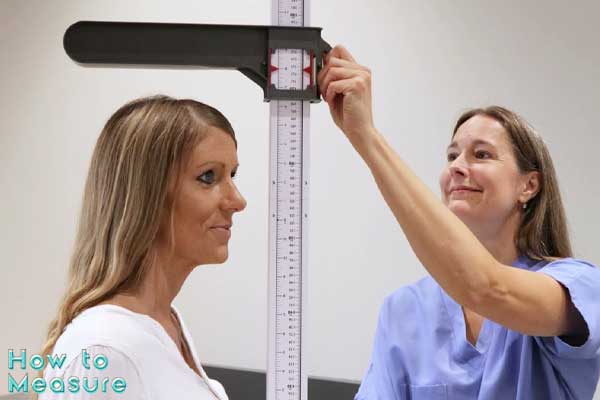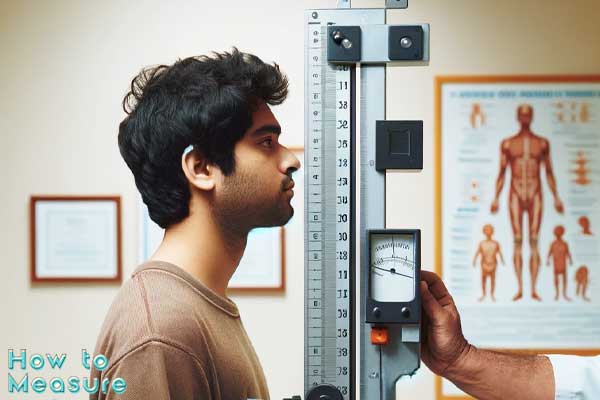In this detailed guide on How to Measure, we’ll explore the intricacies of stadiometer height measurement, a vital tool used in clinics, schools, and various research studies. Stadiometers, with their precise measuring capabilities, are indispensable in obtaining accurate height measurements. We’ll delve into the key steps involved: preparation, child positioning, reading and recording measurements, and checking calibration. Additionally, our website, How to Measure, offers more insights into stadiometer height measurement for those interested.
Preparation for Stadiometer Measurement
The preparation phase plays a pivotal role in securing accurate readings from a stadiometer, a tool used for measuring an individual’s height. This initial stage is about making sure that the person being measured is in a state that allows for the most precise measurement possible. To achieve this, several key steps should be taken.
Firstly: it’s essential to have the individual remove their shoes. Footwear can vary significantly in heel height, which can add artificial inches to the person’s height. Hence, measuring a person barefoot ensures consistency and prevents any added height from shoes.
Next:the removal of bulky or heavy clothing is equally important. Thick sweaters, heavy jackets, and other large garments can obscure the true contours of the body, leading to potential overestimations of height. By wearing light, form-fitting clothing, the stadiometer can more accurately gauge the person’s actual height.
Additionally: accessories and hairstyles that could potentially alter height readings should be addressed. This includes wide-brimmed hats, hair clips, and other headgear that could add extra height. Hairstyles that significantly elevate the hair, such as buns or pompadours, should be flattened or adjusted. These steps are crucial because even small additions to height can lead to inaccuracies in the measurement process.
All these preparation steps are critical to ensure that the stadiometer’s readings are as precise as possible. By removing external factors that can affect height measurements, the stadiometer can more accurately reflect the individual’s true stature. This meticulous approach to preparation not only enhances the reliability of the measurements but also ensures consistency in repeated measurements over time.
Importance of Child Positioning
The correct positioning of an individual, particularly a child, is a fundamental aspect of obtaining precise height measurements using a stadiometer. Ensuring the child adopts the appropriate stance is vital for accuracy and consistency in the measurement process.
When preparing to measure a child’s height, the child should be positioned directly against the stadiometer. Their heels need to be placed together, touching the base of the device. This heel-together stance establishes a solid and uniform base for the measurement.
Furthermore, the child’s legs should be kept straight. Bending the knees, even slightly, can significantly alter the height reading. Therefore, maintaining straight legs is crucial for an accurate portrayal of the child’s stature.
In addition to leg position, the child’s arms should rest comfortably at their sides. This natural arm positioning ensures that the body’s alignment is not distorted during the measurement. Any alteration in arm position, such as raising or extending them, could affect the body’s posture and, consequently, the height measurement.
Lastly, it’s important for the child to keep their shoulders relaxed and in a neutral position. Raised or hunched shoulders can affect the spinal alignment, leading to an inaccurate measurement. Relaxed shoulders contribute to a natural, upright posture, which is essential for precise height assessment.
This specific posture, encompassing heels together, legs straight, arms at sides, and relaxed shoulders, is key to ensuring that the measurement taken by the stadiometer accurately reflects the child’s true height. Adhering to this posture not only provides an accurate measurement at that moment but also ensures consistency in tracking the child’s growth over time.
Reading and Recording Measurements
The accuracy of height measurements obtained from a stadiometer hinges significantly on the adherence to proper measurement techniques. To ensure the highest level of precision, it is essential to measure and record the height to the nearest tenth of a centimeter (0.1 cm). This attention to detail allows for a fine-grained understanding of the individual’s stature, which is particularly important in settings where exact height information is crucial, such as in medical examinations or growth tracking.
In scenarios involving children who are unable to stand independently, an alternative approach is required. In such cases, the recumbent length of the child is measured instead. The recumbent length refers to the distance from the top of the head to the bottom of the feet while the child is lying down. Once this measurement is obtained, a standard adjustment of subtracting 0.7 cm is recommended to estimate the standing height. This adjustment accounts for the natural compression that occurs in the spine and the body’s soft tissues when a person is in a standing position.
This methodology of subtracting 0.7 cm from the recumbent length to estimate standing height is based on established anthropometric research and provides a reasonably accurate representation of the child’s height if they were standing. This practice is particularly useful in pediatric healthcare settings, where accurate height measurements are essential for assessing a child’s growth and development.
Overall, the precision of stadiometer readings and the accuracy of height measurements, whether standing or recumbent, rely heavily on strict adherence to these measurement protocols. By doing so, professionals can ensure that they gather the most accurate data possible, which is fundamental for effective monitoring and assessment.
Checking Calibration
Routine calibration checks are imperative in sustaining the precision and accuracy of stadiometers, which are essential tools for measuring human height. The integrity of a stadiometer’s measurements can be influenced by a variety of factors, including regular use, environmental conditions, and even minor physical displacements. Therefore, to guarantee that the device continues to provide reliable and accurate readings, it is recommended to conduct calibration checks on a regular basis, ideally monthly.
The use of a calibration rod is a standard practice in these checks. A calibration rod is a tool specifically designed to verify the accuracy of measurement devices like stadiometers. By using this rod, which is preset to a known length, one can easily compare the stadiometer’s reading against this standard. If discrepancies are found between the known length of the calibration rod and the measurement indicated by the stadiometer, adjustments can be made to the device to rectify any errors.
This monthly calibration process is not just about maintaining technical accuracy; it is also crucial in contexts where precise height measurements are critical, such as in medical clinics, sports facilities, and research institutions. Inaccurate measurements can lead to misdiagnoses, incorrect data collection, and in some cases, can significantly impact the health and safety of individuals.
In summary, regular calibration of stadiometers using a calibration rod is a key practice for ensuring the ongoing reliability and precision of these measurement devices. This routine maintenance helps safeguard the integrity of height measurements and the various applications that depend on them.
Stadiometers and Height Measurement Devices
Stadiometers are designed for accuracy and ease of use. They usually feature dual scales in centimeters and inches, and some models have a lockable headpiece for recording measurements. The choice of a stadiometer depends on its application, measurement range, and the user’s specific needs.
Installing and Using a Wall Height Meter
Installation of a wall-mounted stadiometer requires a straight, even wall. It’s a straightforward process that involves positioning the stadiometer, marking screw holes, and securing the device to the wall. For accurate measurements, the person’s posture is crucial. They should stand barefoot with their back against the wall, looking straight ahead with the head in the Frankfort plane.
Height Measurement Technique with the Height Meter
Accurate height measurement involves ensuring the person stands correctly beneath the height meter. The base of the meter is then lowered to the top of the head, applying slight pressure if necessary to account for hair. The reading is taken from the window of the height meter.
Conclusion
Stadiometer height measurement is a precise and reliable method for determining an individual’s height. Its accuracy is crucial in various fields like healthcare, education, and research. For more comprehensive guides and resources on height measurement and other related topics, visit our website, How to Measure.












